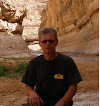Day 782, 10.04.2013
86 632 km since the beginning of the journey
The route : Puerto Rio Tranquilo - Cochrane - Caleta Tortel (236 km).
Next a small choice had to be made, namely - whether to drive straight northwards or drive a little (!)southwards and look over the village named Villa O`Higgins - which is in the end of the legendary road of Carretera Austral Carretera Austral – with the longer name - Carretera General Augosto Pinochet or shorter name - Ruta 7 - is a 1240 kilometer-long road in the south of Chile.
And this road has also been called - "Road after the end of the world" Link. From the internet I looked at the pictures as much as it was possible, I read Wikipedia and wikitravel, etc., and every piece of info confirmed that all of this area was worth visiting.

History. The reconstruction of the road began in the late 1970s, during the period of General Pinochet although during the years from 1950 to 1970 there had been several attempts to connect the central and southern parts of with roads. The military staff that constructed the road consisted of more than 10-thousand men. History of Carretera Austral
The road crosses one of the most uneven and rugged stretches of land in the world. Isolation and natural obstacles such as virgin forests, fjords, marshes, rivers, lakes, cliffs, valleys and impenetrable woods, added to the lack of material and human resources, increased considerably the cost of the necessary infrastructure.This was the environment which challenged the 10,000 members of the Cuerpo Militar del Trabajo (CMT), in opening up the track which would later be transformed into the more than 1,240 km of the Carretera Longitudinal Austral down to Villa O’Higgins, near the Southern Icefield, and 229 km of lateral roads.
Over a period of twenty years, 3,086 linear meters of bridges were constructed; a total of 4,082,344 cubic meters of ordinary earth were removed by excavation, plus 7,955,618 cubic meters of rock; more than 500 tons of explosives were used and 27 camps were set up.
The CMT worked under difficult climatic conditions and in complete geographical isolation, with below zero temperatures for eight months of the year, and ten months of rain. The 1,240 km which have now been completed were built practically without machinery. Machines could only be used after the CMT members had carried out the most difficult work of access and penetration.
The result was a road taking over the mountains and through rain forests and starting from the town of Puerto Montt and ending 7 kilometres southwards from the village of Villa O´Higgins.

In the village of Puerto Rio Tranquilo in the morning.


On the big road already.

The water of the rivers by the road is somehow unusually blue.

Like the water in the swimming-pools although probably the bottoms of the pools are sometimes painted blue.


Further on southwards and there is almost no traffic at all.

The climate changes rapidly. It is said that here in the mountains there are four seasons in one day, but occasionally there can be also four seasons in an hour. Anyway, the sun came out and from the distance between the clouds the snowy mountain peaks appeared.

The road goes on, another pass is left behind.

Along the shores of a lake.


Just next to the road there are plenty of possibilities to supplement the drinking water reserve.

Mountains and waterfalls on the slopes. The untouched Nature. I searched again if there was an opportunity for a closer look at the waterfall - but no - a real rain forest by the road, something like in Brazil. And no footpath - not to mention a bigger road.




Over a long period there is one major intersection, I drive straight on. Puerto Yungay has to wait until the next day. In April the ferry departs 2 times a day, at 12 and at 15 pm., tomorrow it will be necessary to be present in time.

Caleta Tortel. The road ends with a round parking lot.

I arrived a little before sunset, probable sunset, because the sun was nowhere to be seen. It took almost a whole day to cover 240 kilometres of bumpy gravel road. Ok, meanwhile, some stops to take pictures as well.

Caleta Tortel is a little town on the coast of Chile at the mouth of the River Rio Baker with a population of half a thousand. And here there are no such streets as we are accustomed to see. The city was founded in 1955 and developed thanks to the timber industry, as the Guaitecas cypress is growing in the neighbourhood.
Until 2003 the town was accessible only from the sea or in the air, and until the construction of Austral Carretera there was no road here by land. For this reason there are no traditional streets, the majority of the town is built on a slope and the streets are replaced by the wooden stairs and pathways.


Here you can go down to the seaside.


Wooden promenade, also performs the task of a pier.


It is getting darker and I will overnight at the only parking lot of the town. At this round one. Street lighting or parking lot lighting is not working and it is pitch dark outside. Calm, quiet, but at night it gets chilly.

In the morning it is even chillier and the weather is somehow steadily seal-gray



No comments:
Post a Comment